The average cost of Stereotactic Radio Therapy (SRT) in Thailand starts from THB 178250 (USD 5000)
SRT or Stereotactic radiotherapy is a procedure of using several precisely focused beams of radiation to treat tumors as well as other related problems inside the brain, lungs, spine, neck, liver and other body parts.
Moreover, it can not be termed as surgery as per the traditional manner since no incision takes place. Rather it uses 3D imaging for targeting high radiation doses to the affected parts with minimal effect on the healthy tissues in the surrounding of the affected part.
Stereotactic Radiotherapy for the brain as well as the spine is generally completed in one session only. For other body parts like lungs, adrenal, in short, the soft tissue tumors require multiple sessions ranging from 3 to 5.
Almost 5 decades past, stereotactic radiosurgery, pioneered as one less invasive as well as a safer alternative for the standard surgery of brain (neurosurgery), that requires incisions inside the skin, the skull, and the membranes that surround the brain as well as the brain tissue.
From then on, the practice of this stereotactic radiosurgery expanded widely in order to treat several different neurological plus other conditions, as mentioned below:
Researchers are further exploring the application of this stereotactic radiosurgery to treat numerous other ailments, including, breast cancer, prostate cancer, melanoma of the eye, lung cancer, psychological disorders like obsessive-compulsive disorder, and epilepsy.
Several factors affect the stereotactic radiotherapy cost depending on the area and severity of the treatment. Such as:
Treatment cost
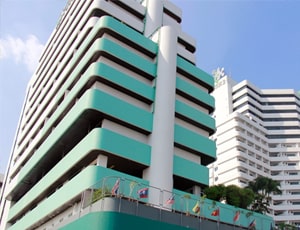
Types of Stereotactic Radio Therapy (SRT) in Phyathai 2 International Hospital and its associated cost
| Treatment Option | Approximate Cost Range (USD) | Approximate Cost Range (THB) |
|---|---|---|
| Stereotactic Radiotherapy (Overall) | 6767 - 16854 | 240942 - 608783 |
| Intracranial SRT | 2785 - 11278 | 100027 - 396924 |
| Extracranial SRT (Body) | 3402 - 12835 | 119140 - 462115 |
| Spine SRT | 3774 - 13548 | 132507 - 484148 |
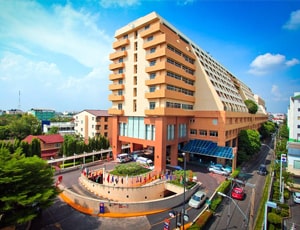
Types of Stereotactic Radio Therapy (SRT) in Vejthani Hospital and its associated cost
| Treatment Option | Approximate Cost Range (USD) | Approximate Cost Range (THB) |
|---|---|---|
| Stereotactic Radiotherapy (Overall) | 6634 - 16913 | 238354 - 613904 |
| Intracranial SRT | 2771 - 11433 | 98537 - 403579 |
| Extracranial SRT (Body) | 3373 - 13173 | 119941 - 451575 |
| Spine SRT | 3785 - 13735 | 134025 - 486593 |
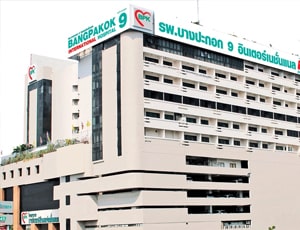
Types of Stereotactic Radio Therapy (SRT) in Bangpakok 9 International Hospital and its associated cost
| Treatment Option | Approximate Cost Range (USD) | Approximate Cost Range (THB) |
|---|---|---|
| Stereotactic Radiotherapy (Overall) | 6705 - 16827 | 245858 - 594093 |
| Intracranial SRT | 2803 - 11095 | 100084 - 407372 |
| Extracranial SRT (Body) | 3387 - 13123 | 117962 - 471307 |
| Spine SRT | 3779 - 13240 | 132950 - 472890 |

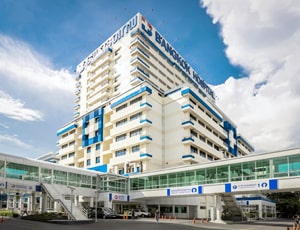
Types of Stereotactic Radio Therapy (SRT) in Bangkok Hospital and its associated cost
| Treatment Option | Approximate Cost Range (USD) | Approximate Cost Range (THB) |
|---|---|---|
| Stereotactic Radiotherapy (Overall) | 6814 - 16558 | 237155 - 605138 |
| Intracranial SRT | 2806 - 11274 | 98892 - 395935 |
| Extracranial SRT (Body) | 3441 - 13117 | 119982 - 455148 |
| Spine SRT | 3701 - 13616 | 134598 - 477810 |
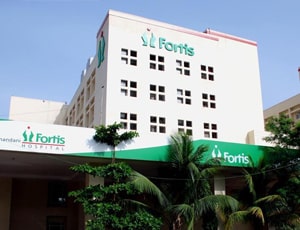
Types of Stereotactic Radio Therapy (SRT) in Fortis Hiranandani Hospital and its associated cost
| Treatment Option | Approximate Cost Range (USD) | Approximate Cost Range (INR) |
|---|---|---|
| Stereotactic Radiotherapy (Overall) | 2022 - 10130 | 166279 - 832080 |
| Intracranial SRT | 2029 - 8082 | 165839 - 665014 |
| Extracranial SRT (Body) | 2538 - 9103 | 207177 - 745618 |
| Spine SRT | 3042 - 10199 | 249557 - 828299 |
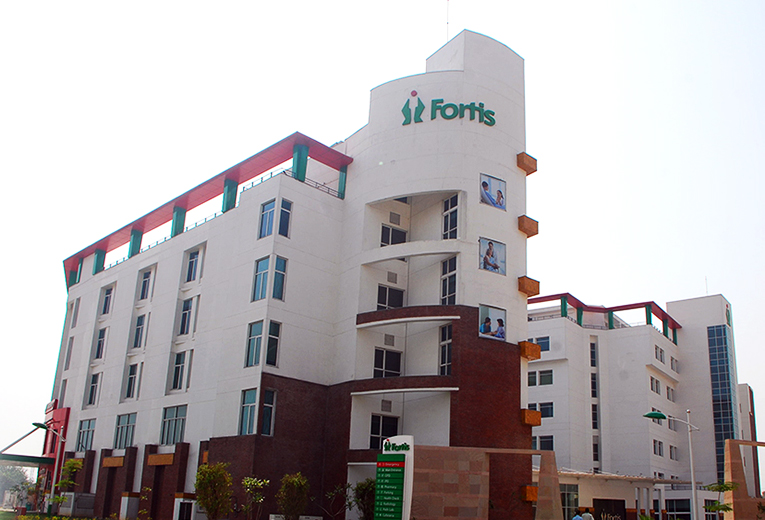
Fortis Hospital, Shalimar Bagh is a super-speciality hospital which occupies a unique place when it comes to providing world class patient care. The hospital is equipped with 262 beds and is expanded over a total area of 7.34 acres. It provides the highest quality of medical care via its team of doctors, technicians, nurses, and management professionals.
Infrastructure & facilities:
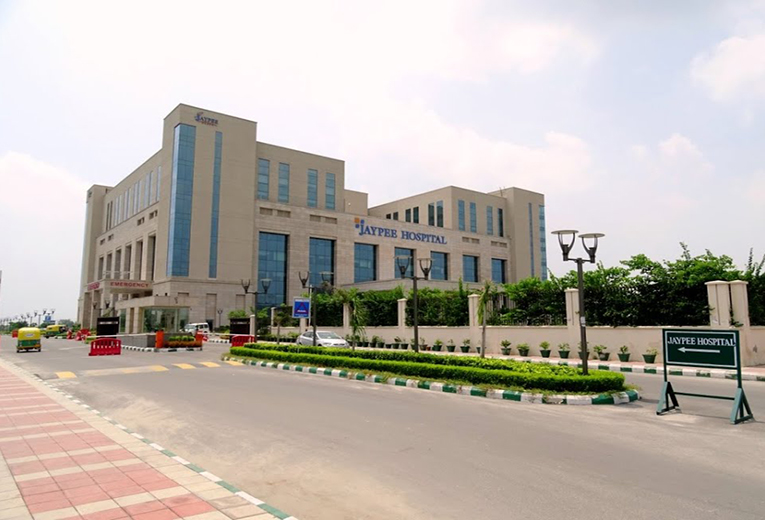
Jaypee Hospital located in Noida, India is accredited by ISO, NABH, NABL. Also listed below are some of the most prominent infrastructural details:
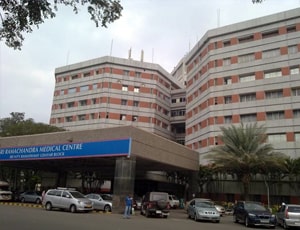
Types of Stereotactic Radio Therapy (SRT) in Sri Ramachandra Medical Centre and its associated cost
| Treatment Option | Approximate Cost Range (USD) | Approximate Cost Range (INR) |
|---|---|---|
| Stereotactic Radiotherapy (Overall) | 2025 - 10197 | 166693 - 832994 |
| Intracranial SRT | 2038 - 8097 | 166535 - 664414 |
| Extracranial SRT (Body) | 2546 - 9116 | 208563 - 748948 |
| Spine SRT | 3057 - 10119 | 248795 - 828884 |
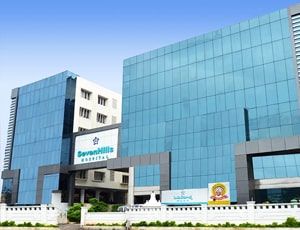
Types of Stereotactic Radio Therapy (SRT) in Seven Hills Hospital and its associated cost
| Treatment Option | Approximate Cost Range (USD) | Approximate Cost Range (INR) |
|---|---|---|
| Stereotactic Radiotherapy (Overall) | 2274 - 11015 | 187931 - 902467 |
| Intracranial SRT | 2217 - 8844 | 183785 - 733004 |
| Extracranial SRT (Body) | 2815 - 9929 | 232997 - 842923 |
| Spine SRT | 3388 - 11327 | 278229 - 920535 |
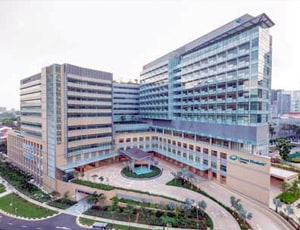
Mount Elizabeth Novena Hospital located in Novena, Singapore is accredited by JCI. Also listed below are some of the most prominent infrastructural details:
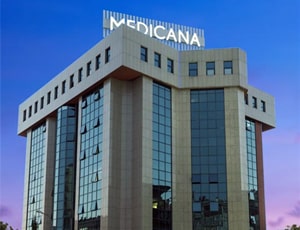
Types of Stereotactic Radio Therapy (SRT) in Medicana Camlica Hospital and its associated cost
| Treatment Option | Approximate Cost Range (USD) | Approximate Cost Range (TRY) |
|---|---|---|
| Stereotactic Radiotherapy (Overall) | 3436 - 14533 | 99515 - 445969 |
| Intracranial SRT | 2839 - 11399 | 85536 - 340384 |
| Extracranial SRT (Body) | 3326 - 12507 | 103255 - 378202 |
| Spine SRT | 3853 - 13800 | 120020 - 400595 |
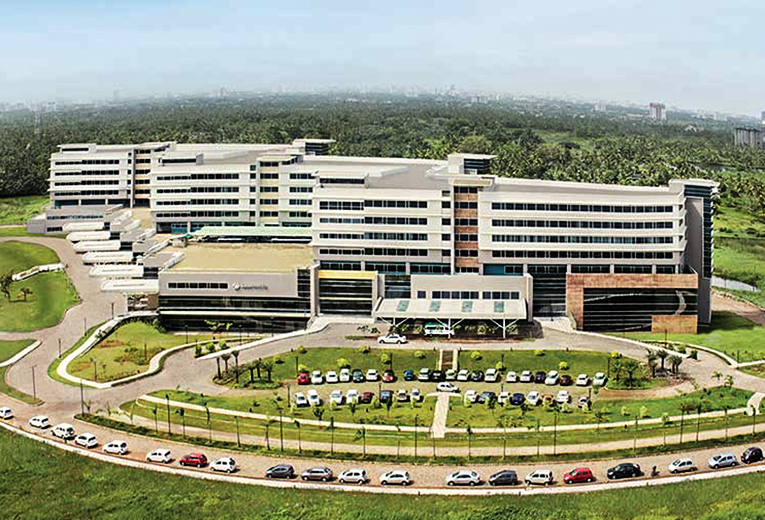
Types of Stereotactic Radio Therapy (SRT) in Aster Medcity and its associated cost
| Treatment Option | Approximate Cost Range (USD) | Approximate Cost Range (INR) |
|---|---|---|
| Stereotactic Radiotherapy (Overall) | 2025 - 10195 | 167178 - 834904 |
| Intracranial SRT | 2023 - 8085 | 166553 - 663662 |
| Extracranial SRT (Body) | 2531 - 9117 | 207747 - 746290 |
| Spine SRT | 3032 - 10182 | 248744 - 833858 |
Types of Stereotactic Radio Therapy (SRT) in Pushpawati Singhania Research Institute and its associated cost
| Treatment Option | Approximate Cost Range (USD) | Approximate Cost Range (INR) |
|---|---|---|
| Stereotactic Radiotherapy (Overall) | 2035 - 10112 | 166371 - 831044 |
| Intracranial SRT | 2032 - 8108 | 165911 - 665500 |
| Extracranial SRT (Body) | 2532 - 9091 | 207936 - 752129 |
| Spine SRT | 3036 - 10128 | 250163 - 833110 |
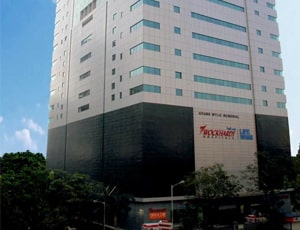
Types of Stereotactic Radio Therapy (SRT) in Wockhardt Hospital - A New Age Hospital and its associated cost
| Treatment Option | Approximate Cost Range (USD) | Approximate Cost Range (INR) |
|---|---|---|
| Stereotactic Radiotherapy (Overall) | 2035 - 10180 | 165701 - 830780 |
| Intracranial SRT | 2037 - 8128 | 166360 - 668820 |
| Extracranial SRT (Body) | 2527 - 9179 | 208946 - 749213 |
| Spine SRT | 3033 - 10111 | 249255 - 833072 |
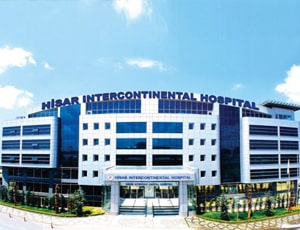
Types of Stereotactic Radio Therapy (SRT) in Hisar Intercontinental Hospital and its associated cost
| Treatment Option | Approximate Cost Range (USD) | Approximate Cost Range (TRY) |
|---|---|---|
| Stereotactic Radiotherapy (Overall) | 3387 - 14597 | 102253 - 436006 |
| Intracranial SRT | 2859 - 11017 | 86269 - 344090 |
| Extracranial SRT (Body) | 3305 - 12573 | 103163 - 367506 |
| Spine SRT | 3885 - 13797 | 119917 - 404837 |
Stereotactic radiotherapy (SRT) is a type of technique used to precisely target radiation beams at the tumour. This is one of the latest innovations in the field of radiation therapy. Since this treatment requires special equipment, machine, and expertise, this treatment is not widely available across all cancer treatment hospitals.
SRT involves treatment of a tumour with the help of a special machine known as a linear accelerator (LINAC). This machine is used to deliver external radiation therapy in the case of normal radiation therapy and intensity-modulated radiation therapy (IMRT).
SRT treatment involves of small daily doses of radiation, which are also known as fractions. The patient may be advised to undergo anywhere between 3 to 30 fractions in a day, depending on the extent of cancer and the size of the area that is being targeted. SRT is mostly used for the treatment of smaller lesions and tumours and is less than 3 cms in size.
Stereotactic radiosurgery (SRS) and stereotactic body radiation therapy (SBRT) are types of SRT. SRS is also known as Gamma Knife surgery. It involves exposing the tumour to a very high dose of radiation in one to five fractions. Gamma Knife surgery is usually used for the treatment of a tumour in the central nervous system (CNS).
On the other hand, SBRT is a special procedure used for the treatment of tumours located outside the central nervous system. In this approach, radiation is delivered through different directions or positions of the body. It can be used for the treatment of small tumours in the lungs, pelvis, prostate, pancreas and other organs as well.
SRT is mostly used for the treatment of the following conditions:
Gamma Knife surgery is different from CyberKnife radiation. The latter is used for the treatment of cancerous and non-cancerous tumours as well as other medical conditions. CyberKnife treatment is actually a frameless robotic radiosurgery system that delivers a high dose of radiation to the targeted location.
Just before the surgery, the radiographer will fit the head frame or the mask in case it is being used for other parts of the body. This is done to restrict the movement so that the targeted location stays in place. You may receive a local anaesthetic before the placement of mask or head frame.
You are placed on the radiotherapy table as soon as the frame is in place. A typical session lasts for just 10 minutes or more, depending on how much radiation is scheduled to be delivered.
In the case of stereotactic radiosurgery or Gamma Knife surgery, several tiny beams of radiation are aimed at a tumour precisely. It can also be used for the treatment of specific conditions such as Parkinson’s disease, trigeminal neuralgia, and epilepsy. This lets the specialist focus a single dose of large radiation at a time to eliminate the tumour cells. In the case of stereotactic body radiation therapy, several beams of radiation are targeted at the cancerous tumour from different directions.
Most of the patients are able to resume their normal life and work within two or three days of the procedure. The patients are usually discharged on the same day of the procedure. However, a few of them may be required to stay overnight is medically advised or needed.
Ask your healthcare adviser for the best multiple options and choose the one that meets your expectations
On an average, Stereotactic Radio Therapy (SRT) in Thailand costs about $5000. Healthcare Accreditation Institute, JCI are just some of the accreditations which top hospitals in Thailand hold where a Stereotactic Radio Therapy (SRT) is conducted.
The Stereotactic Radio Therapy (SRT) package cost in Thailand varies from one hospital to another and may offer different benefits. Some of the best hospitals for Stereotactic Radio Therapy (SRT) offer a comprehensive package that covers the end-to-end expenses related to investigations and treatment of the patient. The treatment cost usually includes the expenses related to hospitalization, surgery, nursing, medicines, and anesthesia. Stay outside the package duration, post-operative complications and diagnosis of a new condition may further increase the Stereotactic Radio Therapy (SRT) cost in Thailand.
There are many hospitals across the country that offer Stereotactic Radio Therapy (SRT) to international patients. Some of the best hospitals for Stereotactic Radio Therapy (SRT) in Thailand include the following:
Upon discharge from the hospital after Stereotactic Radio Therapy (SRT) in Thailand, the patients are advised to stay for about 20 days for recovery. This is important to ensure that the surgery was successful. During this time, control and follow-up tests take place to check for medical fitness.
There are certain additional cost that the patient has to pay apart from the Stereotactic Radio Therapy (SRT) cost. These charges starts from USD 50 per person.
Some of the cpopular cities in Thailand that offer Stereotactic Radio Therapy (SRT) include the following:
There are several doctors who are available for telemedicine consultation for patients requiring Stereotactic Radio Therapy (SRT) in Thailand. The following are some of the best doctors for Stereotactic Radio Therapy (SRT) in Thailand who are available for video consultation:
| Doctor | Cost | Schedule Your Appointment |
|---|---|---|
| Dr. Saipin Tangkaratt | USD 130 | Schedule Now |
| Dr. Suchart Chaimuangraj | USD 81 | Schedule Now |
| Dr. Voratape Kijtavee | USD 81 | Schedule Now |
After the Stereotactic Radio Therapy (SRT) takes place, the average duration of stay at the hospital is about 1 day. During the recovery, the patient is carefully monitored and control tests are performed to see that everything is okay. If required, physiotherapy sessions are also planned during recovery in hospital.
There are more than 4 hospitals that offer Stereotactic Radio Therapy (SRT) in Thailand. These hospitals have propoer infrastructure as well as offer good quality of services when it comes to Stereotactic Radio Therapy (SRT) Apart from good services, the hospitals are known to follow all standard and legal guidelines as dictated by the local medical affairs body or organization.
Some of the best medical specialists for Stereotactic Radio Therapy (SRT) in Thailand are: